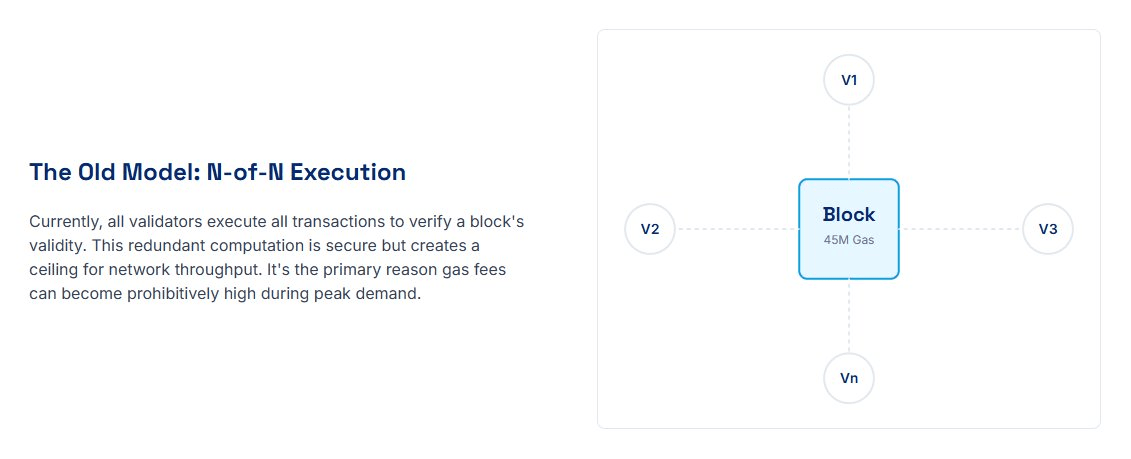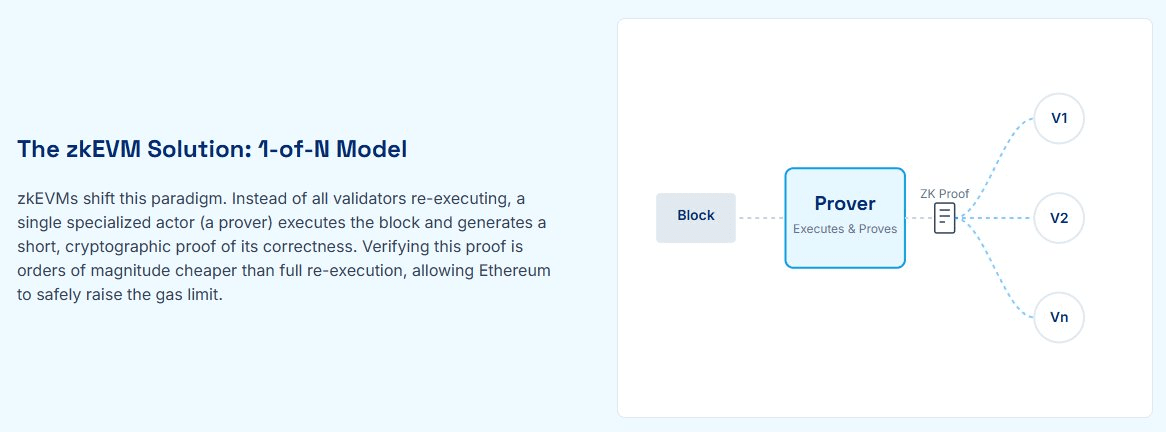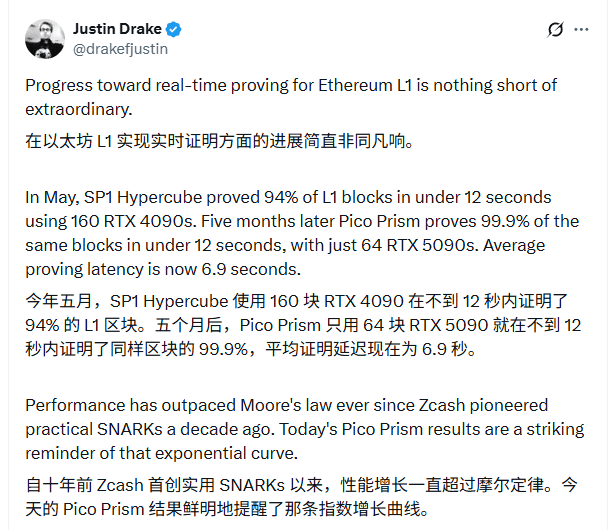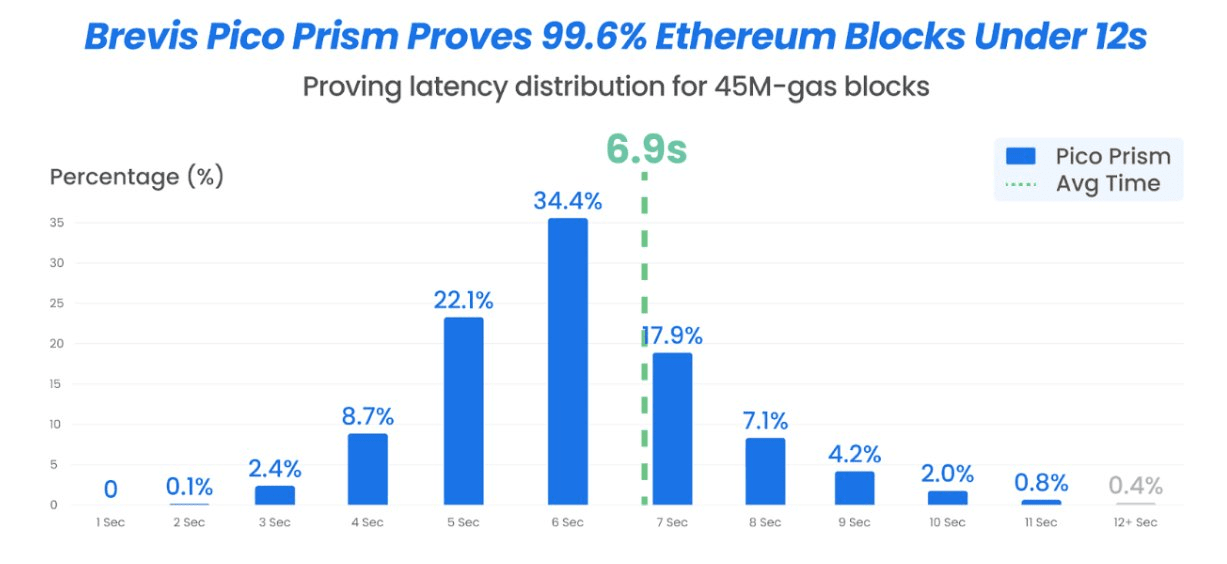Among the many ideas for scaling Ethereum, ZK is the most complex and crucial direction.
Looking across the entire network, Vitalik and the Ethereum Foundation have the most bets on ZK. ZK is a bit like the youngest son in the Ethereum family, receiving the most attention, but with the most uncertain future.
A few days ago, the Ethereum Foundation released the Kohaku roadmap, which includes various foundational components for a privacy wallet. The roadmap emphasizes once again that more features will depend on the implementation of ZK-EVM/ZK-VM.
So, why does Ethereum need ZK-VM so urgently?
The answer is that it is for performance, and not at the expense of security.
Bottleneck for performance improvement: full verification and GAS limit
Previously, we mentioned that the most immediate way to improve Ethereum's performance is to increase the GAS limit, in short, to make each block larger.
However, increasing the GAS limit comes at a cost, as overly large blocks are a heavy burden for the nodes.
Currently, Ethereum's verification mode, known as 'full verification by all', requires all nodes to fully verify each block. This approach is simple and brute-force, but unfortunately has excessive redundancy.

Because if the GAS limit is set too high, then the workload for each node will also need to rise significantly.
Considering that Ethereum's block interval is 12 seconds, time must be reserved for the global propagation of blocks, and time must also be reserved for block propagation and MEV sorting, the time each validator has to accept and verify blocks is actually very short (about 4~8 seconds), making it impossible to conduct many verifications.
Ethereum after ZK transformation: from 'full verification by all' to 'verification by all'.
If Ethereum's L1 is fully transformed to ZK, it will become 'verification by all'. Once a block is assembled, a ZK proof is generated first.
It is well known that ZK proofs are slow to generate, but verification is extremely fast. Therefore, each block only needs to be ZK transformed once, and all nodes only need to quickly verify whether the proof is correct.

This means that Ethereum can significantly increase the GAS limit without significantly increasing the burden on nodes.
A vivid metaphor is: previously, you needed each leader (node) to personally check if you still had vacation days left (full verification by all) before approving your leave request (transaction), and only after all approvals could it proceed.
After ZK transformation, you still apply for a leave process (transaction), and the system finds that you have remaining vacation days, directly informing the leaders, 'This person has leave', and the leaders completely trust that the system won't make mistakes (ZK), then approvals come much faster (verification by all).
This is the reason why Ethereum needs to undergo ZK transformation.
Challenges and cases in cryptography
Of course, the engineering effort to achieve all this is immense, as the cryptographic content is very high, so Ethereum must collaborate with other teams.
So what kind of work do third-party teams need to do? Here, we'll take the Brevis protocol mentioned by Ethereum Foundation's Justin as an example, which is currently the fastest protocol for running ZK.

Brevis is in the ZK-VM track, and their latest Pico Prism technology is currently the fastest at producing ZK proofs under given conditions.
According to disclosures, on the current Ethereum block with a 45M GAS limit, Brevis used 64 RTX 5090 GPUs. In tests, 99.6% of blocks completed proof in 12 seconds, and 96.8% had proof coverage within 10 seconds.

In order to maintain decentralization, Ethereum requires that the equipment used for ZK proof generation must not exceed 100k USD.
Otherwise, having a few H200/B200 machines per person would definitely be faster, but that would raise the threshold too high. Brevis's GPUs happen to be right at the 100k USD level.
Additionally, why is a 10-second coverage rate also very important?
Because generally MEV blocks are produced in 1~3 seconds, plus 10 seconds for the proof, filling the 12 seconds exactly, so 12 seconds cannot be used; a high coverage rate in 10 seconds is necessary.
Summary: The logical path of Ethereum's ZK transformation
If Ethereum wants to speed up L1, it must increase the GAS limit;
👇
To increase the GAS limit, ZK transformation is necessary;
👇
To achieve elegant ZK transformation (proof in <10 seconds, equipment purchased for <100k USD), the collaboration of the cryptographic community in the Crypto circle is required.
This content is jointly published by Nothing Research, Ebunker, and Ourbit.


